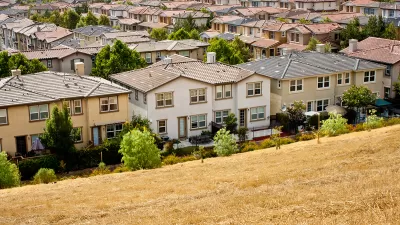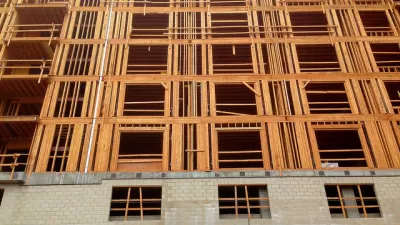Unlike the message of an annoying commercial, bigger may not be better in the real estate market. Residential developers in Washington D.C. have found that millennials like small studios, or micro-units, provided the spaces are well designed.
We've posted articles on micro-apartments located in Boston, Manhattan, San Francisco, and even in smaller cities including Berkeley, Calif., but this is the first for the nation's capital. Micro units have come to D.C. and they are proving profitable for developers and affordable for tenants, reports Liz Essley Whyte for The Washington Post's Express.
Inherently more affordable than larger units, what makes them successful are well-designed floor plans and well-used common spaces. Whyte focuses on The Harper on 14th Street which rents studios, one bedrooms and jr. one bedrooms, but as of July 22, there are no vacancies.
To be classified as a micro unit, it need not be truly small, according to Whyte.
Though definitions of micro-units vary, most real estate experts consider a micro-unit to be any apartment less than 500 square feet that’s designed for efficiency.
Affordability is key to making the apartments attractive to millennials, luring them away from "the roommate phenomenon," writes Whyte. "If millennials are teaming up to split two- or three- bedroom units in nice buildings, why not just offer smaller spaces so that they can afford to live on their own?" she asks.
"The other big hook for tenants: well-designed floor plans," she adds. "Having a carefully laid out space is key to making a tiny rental work."
Vornado president Mitchell Schear adds one more feature that mitigates the small size of the individual units.
"We’re making places for millennials,” says Schear. “You’ll have a small space of your own, but there will be small spaces in common that people will share. … You have this feeling of openness and sharing and community.”
Indeed, a tenant at The Harper "found that the tight spaces in studios lend themselves to a tight-knit community in the common areas, making renters less likely to worry about their small square footage."
Whyte also writes about "The Wharf (690 Water St. SW), a new project planned for D.C.’s Southwest Waterfront expected to open in 2017."
At one residential building there, about 170 of the 500 apartments will be micro-units. The Wharf’s developers hope those smaller apartments will appeal to younger renters who want “to live in a high-energy environment” without a roommate, says associate project director Matthew Steenhoek.
The affordability of micro-units has not gone unnoticed by urban think tanks like San Francisco's SPUR. Calling buildings with these small units and reduced parking requirements "affordable by design", they see them as providing a valuable way to supplement dwindling government and developer-imposed subsidies to provide below market rate rentals.
FULL STORY: Micro-units help D.C. renters live to the max

Study: Maui’s Plan to Convert Vacation Rentals to Long-Term Housing Could Cause Nearly $1 Billion Economic Loss
The plan would reduce visitor accommodation by 25% resulting in 1,900 jobs lost.

Alabama: Trump Terminates Settlements for Black Communities Harmed By Raw Sewage
Trump deemed the landmark civil rights agreement “illegal DEI and environmental justice policy.”

Why Should We Subsidize Public Transportation?
Many public transit agencies face financial stress due to rising costs, declining fare revenue, and declining subsidies. Transit advocates must provide a strong business case for increasing public transit funding.

Paris Bike Boom Leads to Steep Drop in Air Pollution
The French city’s air quality has improved dramatically in the past 20 years, coinciding with a growth in cycling.

Why Housing Costs More to Build in California Than in Texas
Hard costs like labor and materials combined with ‘soft’ costs such as permitting make building in the San Francisco Bay Area almost three times as costly as in Texas cities.

San Diego County Sees a Rise in Urban Coyotes
San Diego County experiences a rise in urban coyotes, as sightings become prevalent throughout its urban neighbourhoods and surrounding areas.
Urban Design for Planners 1: Software Tools
This six-course series explores essential urban design concepts using open source software and equips planners with the tools they need to participate fully in the urban design process.
Planning for Universal Design
Learn the tools for implementing Universal Design in planning regulations.
Smith Gee Studio
Alamo Area Metropolitan Planning Organization
City of Santa Clarita
Institute for Housing and Urban Development Studies (IHS)
City of Grandview
Harvard GSD Executive Education
Toledo-Lucas County Plan Commissions
Salt Lake City
NYU Wagner Graduate School of Public Service





























